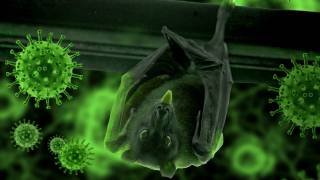Children Found Susceptible To COVID-19 Disease

A new study found children of all ages, including infants, appeared susceptible to COVID-19 disease.
And, this pre-publication study issued by the American Academy of Pediatrics (AAP) on March 18, 2020, reported the clinical manifestations of children’s COVID-19 cases were generally less severe than those of adults’ patients.
Yvonne A. Maldonado, M.D., FAAP, chair of the AAP Committee on Infectious Diseases, noted in a press release that because the SARS-CoV-2 coronavirus is novel, infants wouldn’t be able to get antibodies from their mothers.
The distribution of children’s COVID-19 cases varied with time and space, and there was no significant gender difference.
This nationwide case series of 2,143 pediatric patients with COVID-19 disease reported to the Chinese Center for Disease Control and Prevention between January 16 to February 8, 2020, were included in this study.
There were 731 (34.1%) laboratory-confirmed cases and 1,412 (65.9%) suspected cases. Over 90 percent of all patients were asymptomatic, mild, or moderate cases.
The median age of all patients was 7 years (interquartile range: 2-13), and 1,213 cases (56.6%) were boys.
The study also found infants had higher rates of serious illness than older children.
Just under 11 percent of infants had severe or critical cases compared to 7 percent of children ages 1-5, 4 percent of those 6-10, 4 percent of those 11-15 and 3 percent of those 16 and older.
And, the median time from illness onset to diagnosis was 2 days. There was a rapid increase of disease at the early stage of the epidemic and then there was a gradual and steady decrease.
Furthermore, the SARS-CoV-2 coronavirus spread rapidly from Hubei Province to surrounding China provinces over time. More children were diagnosed with COVID-19 disease in Hubei province than any other province.
Furthermore, these researchers said this study’s data provides strong evidence for human-to-human transmission of this coronavirus.
Dr. Maldonado advised being cautious in extrapolating results to the U.S., as children in China may have different baseline health and access to care.
Still, she said the study provides valuable information and highlights the need for more research and testing capabilities to understand children’s ability to spread the virus, especially without symptoms.
“That’s a big variable because we know asymptomatic shedding is actually probably more likely to perpetuate an epidemic within a population,” she said. “So social distancing measures may really be the way to keep that from happening,” concluded Dr. Maldonado.
This work was partially supported by the Science and Technology Commission of Shanghai Municipality. Financial Disclosure: The authors have indicated they have no financial relationships relevant to this article to disclose.
Study correspondence: Prof. S. Tong, Shanghai Children’s Medical Center, Shanghai Jiao Tong University School of Medicine, Shanghai 200127, China. Ph: +86-21-3868 3092; Email: tongshilu@scmc.com.cn.
SARS-CoV-2 outbreak news published by Coronavirus Today.








.jpg)

.jpg)




.jpg)







.jpg)
